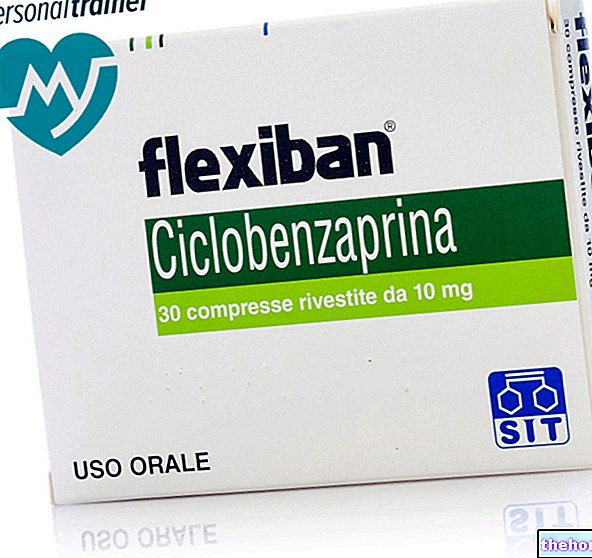Active ingredients: Canrenoate (potassium canrenoate)
Kanrenol 25 mg tablets
Kanrenol 100 mg tablets
Kanrenol 200 mg film-coated tablets
Kanrenol 200 mg / 2 ml powder and solvent for solution for injection
Why is Kanrenol used? What is it for?
Kanrenol contains the active ingredient potassium canrenoate, a substance that promotes the production of urine (diuretic action) by counteracting the activity of a hormone called aldosterone which regulates the levels of sodium, potassium and the volume of liquids in the body.
Kanrenol is used in case of:
- disease due to increased production of the hormone aldosterone (primary hyperaldosteronism)
- swelling due to fluid accumulation (edema) from secondary aldosteronism, eg. in case of heart failure, liver disease (liver cirrhosis in the ascitic phase), kidney diseases (nephrotic syndrome)
- high blood pressure with no known cause, when other therapies have not been sufficiently effective or tolerated.
Contraindications When Kanrenol should not be used
DO NOT use Kanrenol
- if you are allergic to potassium canrenoate or any of the other ingredients of this medicine (listed in section 6)
- if you have acute and chronic kidney failure
- if you cannot urinate (anuria)
- if you have high levels of potassium in your blood
- if you have low levels of sodium in the blood
Precautions for use What you need to know before taking Kanrenol
Warnings and Precautions
Talk to your doctor or pharmacist before using Kanrenol.
- Your doctor will frequently have blood tests done to you, as during treatment you may have an increase in blood potassium levels, a decrease in blood sodium levels, an increase in blood nitrogen levels (azotemia) and excessive production. of acids at the level of metabolism (states of metabolic acidosis). In case of surgery, your doctor will have you do these tests before the surgery.
- Your doctor will inform you about the need to stop treatment depending on the sodium and potassium values in your blood.
Children
In very early childhood this medicine should be administered only in cases of real need and under direct medical supervision.
For those who play sports:
The use of the drug without therapeutic necessity constitutes doping and can in any case determine positive anti-doping tests.
Interactions Which drugs or foods can modify the effect of Kanrenol
Other medicines and Kanrenol
Tell your doctor or pharmacist if you are using, have recently used or might use any other medicines.
Kanrenol may potentiate the effect of the following medicines:
- antihypertensive medicines (used to lower blood pressure),
- ganglionic medicines (which block ganglia, i.e. peripheral nerve centers).
In these cases the doctor may change the dosage of Kanrenol.
Concomitant administration of the following medicinal products reduces the diuretic (urine-producing) activity of Kanrenol:
- acetylsalicylic acid,
- derivatives of acetylsalicylic acid.
Kanrenol with food and drink
You should avoid a potassium-rich diet during treatment.
Warnings It is important to know that:
Pregnancy and breastfeeding
If you are pregnant or breast-feeding, think you may be pregnant or are planning to have a baby, ask your doctor or pharmacist for advice before using this medicine.
If you are pregnant, the medicine will be prescribed only in cases of real need and under the direct supervision of your doctor, who will assess whether the benefits for you outweigh the risks for the fetus.
This medicine should not be used during breastfeeding.
Driving and using machines
Kanrenol has no or negligible effects on the ability to drive and use machines.
Kanrenol tablets contain lactose, sodium and castor oil
Kanrenol 25 mg and 100 mg tablets contain lactose: if you have been told by your doctor that you have an intolerance to some sugars, contact your doctor before taking this medicine.
Kanrenol 25 mg and 100 mg tablets contain 2 mmol sodium per tablet. To be taken into consideration in people with reduced kidney function or who follow a low sodium diet.
Kanrenol 25mg and 100mg tablets contain castor oil which can cause stomach upset and diarrhea.
Dosage and method of use How to use Kanrenol: Dosage
Always use this medicine exactly as your doctor or pharmacist has told you. If in doubt, consult your doctor or pharmacist.
Kanrenol 25 mg and 100 mg tablets
The recommended dose is 50-200 mg per day, depending on the type and severity of the disease. Follow your doctor's prescription.
Kanrenol 200 mg film-coated tablets
The recommended dose is 50-200 mg per day, depending on the type and severity of the disease. Follow your doctor's prescription.
Kanrenol 200 mg / 2 ml powder and solvent for solution for injection
The recommended dose is 200-600 mg per day (1-3 vials) administered slowly into a vein or through a drip.
- Shake well during preparation and before use;
- do not exceed the daily dosage of 800 mg;
- do not inject more than 400 mg at a time.
Use in elderly patients
In elderly patients, the dosage must be carefully established by the physician, who will evaluate a possible reduction in dosage.
Overdose What to do if you have taken too much Kanrenol
If you use more Kanrenol than you should
In case of accidental ingestion or use of an overdose of Kanrenol, notify your doctor immediately or go to the nearest hospital.
If you forget to use Kanrenol
Do not use a double dose to make up for a forgotten dose.
If you stop taking Kanrenol
If you have any further questions on the use of this medicine, ask your doctor or pharmacist.
Side Effects What are the side effects of Kanrenol
Like all medicines, this medicine can cause side effects, although not everybody gets them.
Side effects that have occurred rarely (may affect up to 1 in 1000 patients):
- nausea
- cramp-like abdominal pain
- drowsiness
Occasionally, the following side effects have been reported with the use of medicines containing substances similar to potassium canrenoate:
- skin rashes of allergic origin
- fever
- loss of movement coordination (tendency to ataxia)
- enlarged breasts in males (gynecomastia)
- mild androgenic effects eg. excessive hair growth (hirsutism)
- temporary disorder of sexual desire
- irregular menstrual cycle
These are all generally reversible on discontinuation of treatment.
The exact frequency of the side effects listed above is not known.
Reporting of side effects
If you get any side effects, talk to your doctor or pharmacist. This includes any possible side effects not listed in this leaflet. Side effects can also be reported directly via the national reporting system at https://www.aifa.gov.it/content/segnalazioni-reazioni-avverse. By reporting side effects you can help provide more information on safety of this medicine.
Expiry and Retention
Do not store above 25 ° C.
Keep this medicine out of the sight and reach of children.
Do not use this medicine after the expiry date which is stated on the package after EXP. The expiry date refers to the last day of that month.
Do not throw any medicines via wastewater or household waste. Ask your pharmacist how to throw away medicines you no longer use. This will help protect the environment.
Composition and pharmaceutical form
What Kanrenol contains
Kanrenol 25 mg tablets
- The active ingredient is potassium canrenoate. Each tablet contains 25 mg of potassium canrenoate.
- The other ingredients are amberlite (potassium salt of the methacrylic acid-divinylbenzene copolymer), microcrystalline cellulose, propylene glycol, shellac, hydroxypropylmethylcellulose (E 464), lactose, magnesium stearate, hydrogenated castor oil, precipitated silica, sodium bicarbonate, titanium dioxide.
Kanrenol 100 mg tablets
- The active ingredient is potassium canrenoate. Each tablet contains 100 mg of potassium canrenoate.
- The other ingredients are amberlite (potassium salt of the methacrylic acid-divinylbenzene copolymer), microcrystalline cellulose, propylene glycol, shellac, hydroxypropylmethylcellulose (E 464), lactose, magnesium stearate, hydrogenated castor oil, precipitated silica, sodium bicarbonate, titanium dioxide.
Kanrenol 200 mg film-coated tablets
- The active ingredient is potassium canrenoate. Each tablet contains 200 mg of potassium canrenoate.
- The other ingredients are microcrystalline cellulose, magnesium stearate, sodium starch glycolate, povidone, methacrylic acid type C copolymer, triethyl citrate, polyethylene glycol 6000, titanium dioxide, simethicone, talc.
Kanrenol 200 mg / 2 ml powder and solvent for solution for injection
Powder vial
- The active ingredient is potassium canrenoate. Each vial of powder contains 200 mg of potassium canrenoate.
- The other ingredients are tris (hydroxymethyl) aminomethane.
Solvent vial
Each vial of solvent contains 2 ml of water for injections.
What Kanrenol looks like and contents of the pack
Kanrenol 25 mg tablets
Each pack contains a blister with 20 tablets.
Kanrenol 100 mg tablets
Each pack contains a blister with 20 tablets.
Kanrenol 200 mg film-coated tablets
Each pack contains a blister with 20 tablets.
Kanrenol 200 mg / 2 ml powder and solvent for solution for injection
Each pack contains 6 vials of powder + 6 vials of 2 ml solvent.
Source Package Leaflet: AIFA (Italian Medicines Agency). Content published in January 2016. The information present may not be up-to-date.
To have access to the most up-to-date version, it is advisable to access the AIFA (Italian Medicines Agency) website. Disclaimer and useful information.
01.0 NAME OF THE MEDICINAL PRODUCT
KANRENOL
02.0 QUALITATIVE AND QUANTITATIVE COMPOSITION
• KANRENOL 200 mg / 2 ml powder and solvent for solution for injection
One vial of powder contains:
Active principle:
Potassium canrenoate 200.0 mg
• KANRENOL 25 Tablets
One tablet contains:
Active principle:
Potassium canrenoate 25.0 mg
• KANRENOL 100 Tablets
One tablet contains:
Active principle:
Potassium canrenoate 100.0 mg
• KANRENOL 200 Tablets
One tablet contains:
Active principle:
Potassium canrenoate 200.0 mg
03.0 PHARMACEUTICAL FORM
Powder and solvent for solution for injection
Tablets
04.0 CLINICAL INFORMATION
04.1 Therapeutic indications
Primary hyperaldosteronism, edematous states due to secondary hyperaldosteronism (congestive heart failure, liver cirrhosis in the ascitic phase, nephrotic syndrome) and essential arterial hypertension where other therapies have not been sufficiently effective or tolerated.
04.2 Posology and method of administration
- Tablets: according to medical opinion, 50 - 200 mg per day, depending on the type and severity of the disease.
- Vial of powder: 200-600 mg per day (1-3 vials) by slow intravenous route or in a drip of 5% physiological or glucose solution, without adding other parenteral products.
Shake well during preparation and before use.
In the treatment of elderly patients the posology must be carefully established by the doctor who will have to evaluate a possible reduction of the dosages indicated above.
04.3 Contraindications
Acute and chronic renal failure, anuria, hyperkalaemia, hyponatremia.
Individual ascertained hypersensitivity to the product.
04.4 Special warnings and appropriate precautions for use
Since hyperkalaemia, hyponatremia, azotemic increases, states of metabolic acidosis can occur during the treatment, it is necessary to check the blood levels of sodium, potassium, chlorine and the alkaline reserve frequently.
In case of surgery, these checks must be carried out before the surgery itself.
Treatment should be discontinued in the presence of sodium levels below 126 mEq / l and potassium levels above 5.5 mEq / l.
A diet rich in potassium should be avoided during treatment. In very early childhood, the product should be administered in cases of real need, under the direct supervision of the doctor.
For those who play sports:
The use of the drug without therapeutic necessity constitutes doping and can in any case determine positive anti-doping tests.
KANRENOL 25 mg and 100 mg contain lactose: patients with rare hereditary problems of galactose intolerance, the Lapp lactase deficiency, or glucose-galactose malabsorption should not take this medicine.
04.5 Interactions with other medicinal products and other forms of interaction
Antihypertensive drugs, especially if ganglionic, may be enhanced by the simultaneous administration of the product, making it necessary to adjust the dosage.
The simultaneous administration of acetylsalicylic acid and / or derivatives reduces the diuretic activity of the product.
04.6 Pregnancy and lactation
In pregnant women, the product should be administered in cases of real need, under the direct supervision of the doctor.
The product should not be used during breastfeeding.
04.7 Effects on ability to drive and use machines
The product has no effect on the ability to drive and use machines.
04.8 Undesirable effects
Rarely nausea, cramp-like abdominal pain, drowsiness.
Occasionally, with the use of structurally related drugs, other symptoms have been reported such as allergic rashes, temperature rises, tendency to ataxia, gynecomastia, mild androgenic effects (hirsutism), transient libido disturbances, menstrual irregularities, usually all reversible upon discontinuation of treatment.
04.9 Overdose
Intravenously and by drip it is advisable not to exceed the daily dosage of 800 mg and, in any case, it is preferable not to inject more than 400 mg at a time.
05.0 PHARMACOLOGICAL PROPERTIES
05.1 Pharmacodynamic properties
Potassium canrenoate is a derivative of spironolactones and chemically corresponds to potassium 3- (3-oxo-17-beta-hydroxy-4,6-androstadien-17alpha-yl) propionate. The substance exerts diuretic activity by antagonizing aldosterone and mineralocorticoids with a competitive mechanism at the level of the distal convoluted tubule and collecting duct, with inhibition of the reabsorption of Na + and Cl-ed in the absence of potassium-dispersing effects. Unlike spironolactone, canrenoate. of potassium is water-soluble and, at the same doses, it is endowed with a more favorable and more ready activity. Due to the particular characteristics of bioavailability it is possible to use lower dosages with a consequent reduction of side effects, a particularly advantageous feature during prolonged treatments.
05.2 Pharmacokinetic properties
After oral administration, potassium canrenoate induces markedly higher plasma levels of canrenone, the active metabolite of both substances, compared to spironolactone. This metabolite shows an elevated blood peak in man at the third-fourth hour, with levels still very high at the twelfth hour and a half-life of several hours. The main elimination routes are renal and biliary ones.
05.3 Preclinical safety data
The acute toxicity values expressed as LD50 after oral administration in mice and rats were respectively equal to 1498 mg / kg and 1656 mg / kg. These studies were performed by administering the drug with minimum and maximum dosages corresponding to approximately 360-1000 times, for mice, and 480-1200 times, for rats, the average dosage expected for therapeutic use. The DL value 50 by the ip route in mice it is equal to 135 mg / kg, in the rat via iv 110 mg / kg, in the rabbit via iv it is between 51 and 75 mg / kg.
Chronic toxicity tests conducted in rats and dogs did not reveal any particular alterations affecting the various organs, nor any carcinogenic activity.
Studies performed on rats and rabbits have shown that the drug is neither mutagenic nor teratogenic.
06.0 PHARMACEUTICAL INFORMATION
06.1 Excipients
• KANRENOL 200 mg / 2 ml powder and solvent for solution for injection
Tris (hydroxymethyl) aminomethane. One vial of solvent contains: water for injections.
• KANRENOL Tablets (25 and 100 mg)
Amberlite (potassium salt of the methacrylic acid-divinylbenzene copolymer), microcrystalline cellulose, propylene glycol, shellac, hydroxypropylmethylcellulose (E464), lactose, magnesium stearate, hydrogenated castor oil, precipitated silica, sodium bicarbonate, titanium dioxide.
• KANRENOL 200 Tablets
Microcrystalline cellulose, magnesium stearate, sodium starch glycolate, povidone, type C methacrylic acid copolymer, triethyl citrate, polyethylene glycol 6000, titanium dioxide, simethicone, talc.
06.2 Incompatibility
- Injectable KANRENOL: the product is injected as it is or in a drip of 5% physiological or glucose solution, without adding other parenteral products.
- KANRENOL tablets: no known chemical or physico-chemical incompatibilities.
06.3 Period of validity
3 years
06.4 Special precautions for storage
None
06.5 Nature of the immediate packaging and contents of the package
- Powder and solvent for solution for injection
Carton containing 6 vials (neutral glass) + 6 vials (neutral glass) of 2 ml solvent
- Tablets
Carton containing 20 tablets of 25 mg in blister packs (aluminum / aluminum)
Carton containing 20 tablets of 100 mg in blister (aluminum / aluminum)
Carton containing 20 tablets of 200 mg in blister packs (aluminum / aluminum)
06.6 Instructions for use and handling
None
07.0 MARKETING AUTHORIZATION HOLDER
TEOFARMA S.r.l. - Via F.lli Cervi, 8 - 27010 Valle Salimbene (PV)
08.0 MARKETING AUTHORIZATION NUMBER
- 6 powder vials + 6 solvent vials of 2 ml - A.I.C .: n. 023745019
- 20 tablets of 25 mg - A.I.C .: n. 023745096
- 20 tablets of 100 mg - A.I.C .: n. 023745072
- 20 tablets of 200 mg - A.I.C .: n. 023745108
09.0 DATE OF FIRST AUTHORIZATION OR RENEWAL OF THE AUTHORIZATION
- 6 powder vials + 6 solvent vials of 2 ml: 11.10.1978
- 20 tablets of 25 mg: 03.02.1982
- 20 tablets of 100 mg: 03.02.1982
- 20 tablets of 200 mg: 28.03.2001
Authorization renewal: 01.06.2010
10.0 DATE OF REVISION OF THE TEXT
February 2011




























